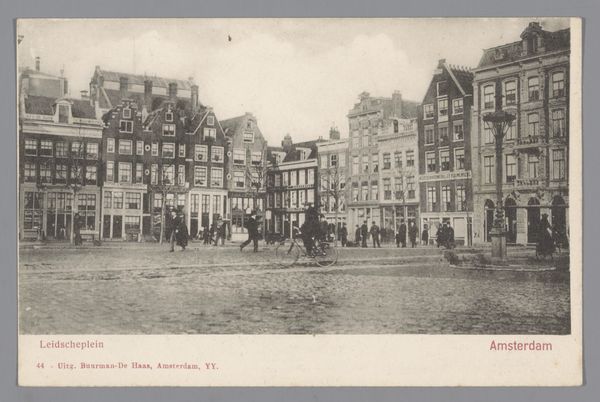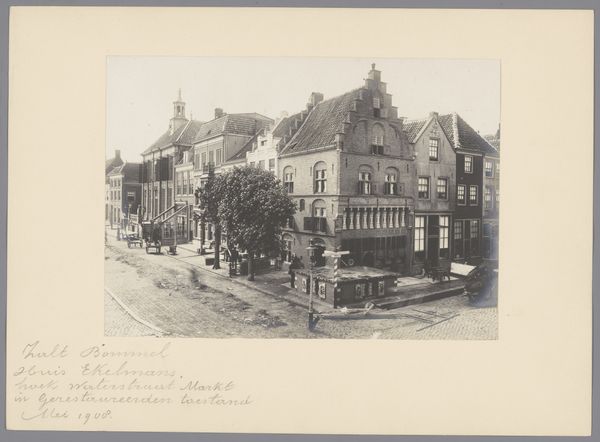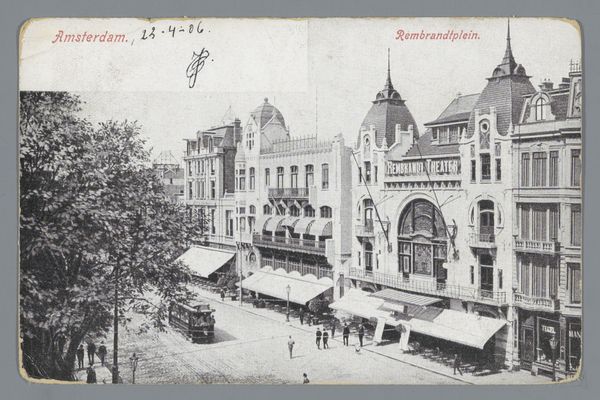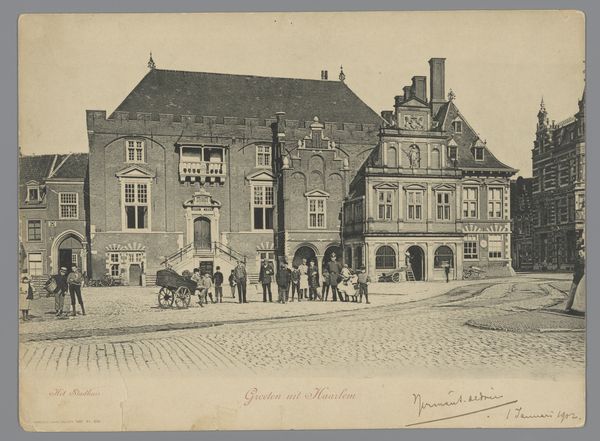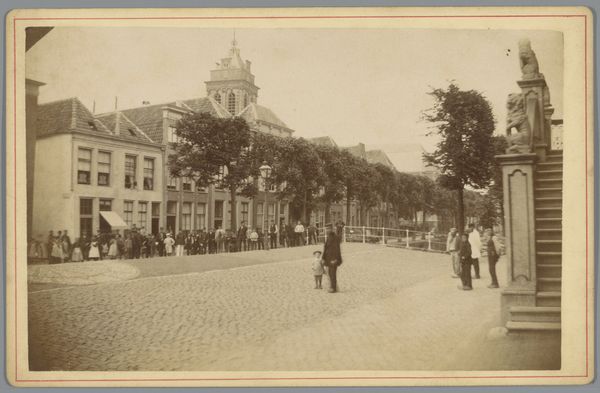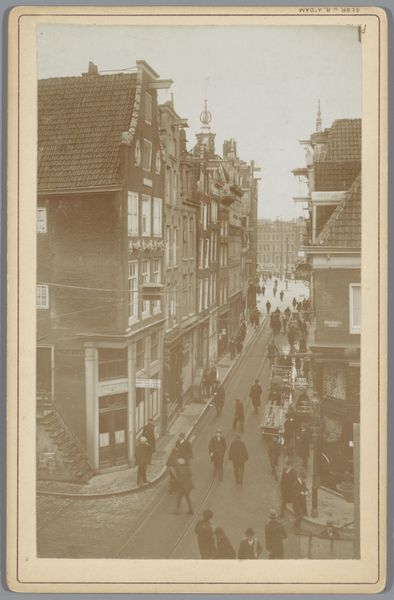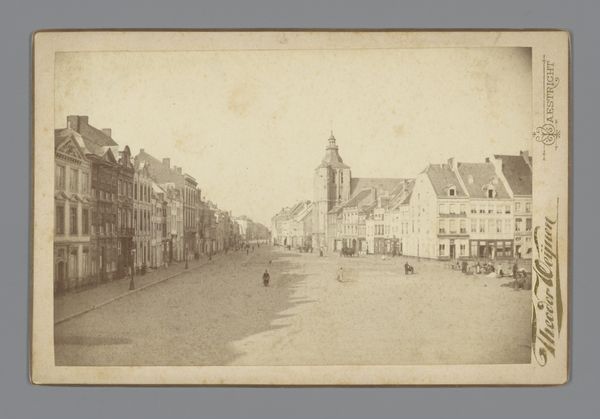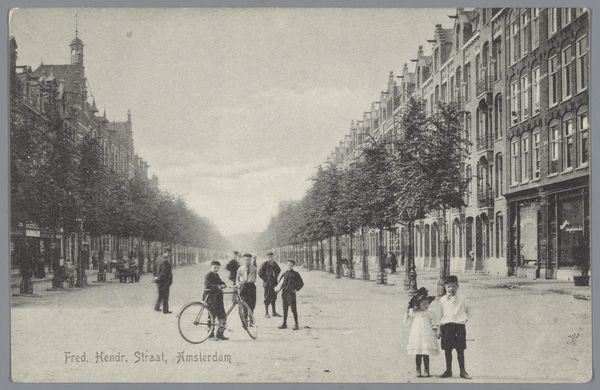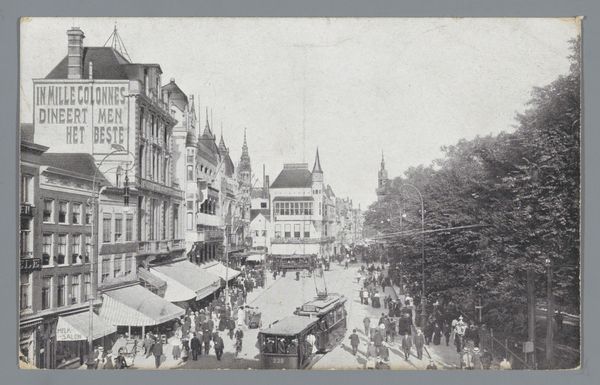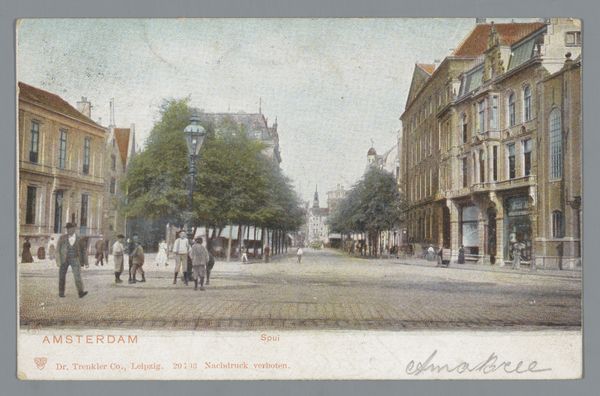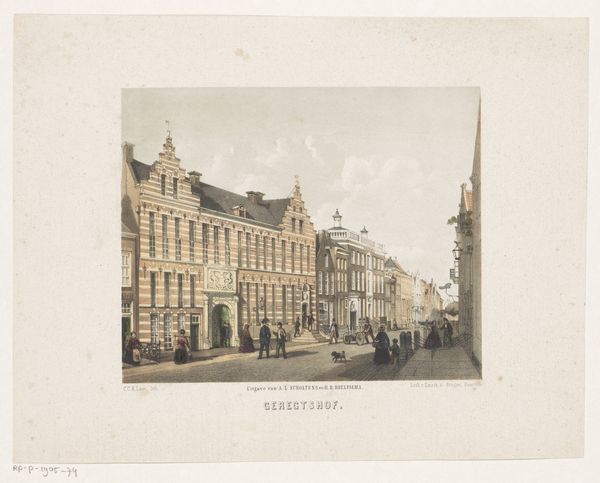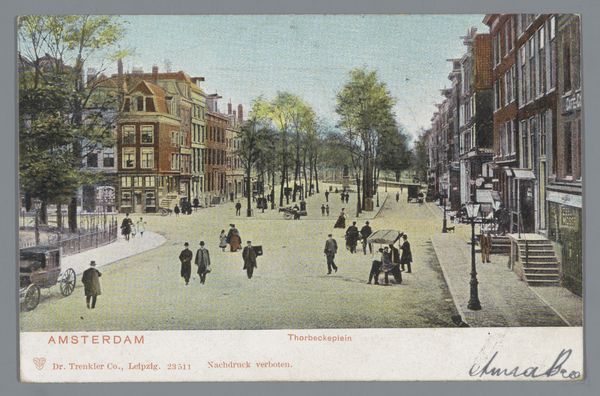
print, photography, gelatin-silver-print
#
dutch-golden-age
#
pictorialism
# print
#
landscape
#
street-photography
#
photography
#
gelatin-silver-print
#
cityscape
#
paper medium
#
realism
Dimensions: height 89 mm, width 137 mm
Copyright: Rijks Museum: Open Domain
Curator: This gelatin silver print, created sometime between 1890 and 1920, offers a snapshot of Leidscheplein in Amsterdam. Buurman-De Haas, the studio credited, truly captured a slice of everyday life. Editor: Immediately, I’m drawn to the greyscale and the rough, tactile feel that these early photographic printing methods possess. You can almost smell the coal smoke and damp cobblestones. Curator: The image definitely carries that weight. Notice how the placement of the figures seems almost choreographed; their arrangement gives life to the buildings themselves, breathing narrative into a purely architectural scene. Consider the implied stories: Where are these people going? What advertisements draw their attention at the news kiosk? Editor: And how were images such as this made accessible to a broad audience? It must have required dedicated craftspeople creating the photographic paper, tending to the darkroom chemicals... We see the end product, but forget the layered processes to get it into circulation. This object’s context includes workshops, industrial manufacture, and eventually consumption. Curator: True, and let's not overlook the social implications. Who is depicted here? Predominantly, the image signals the emergence of a leisure class in the late 19th century: notice the relatively well-dressed men and women occupying a modern urban center, absorbing printed media. How the camera documents societal changes becomes symbolic. Editor: Right. It serves as material evidence of urbanization, the increasing tempo of modern life. We have architecture constructed from specific materials, new modes of transportation, the emergence of printed advertising—all intersecting at one site through capitalist expansion. Curator: Indeed, a city square imbued with the optimism and perhaps even the anxiety of modernization itself. So much history trapped within this fragile piece of paper! Editor: And now that moment in time and material is ours to revisit. This makes me keen to explore similar street scenes across Europe and assess these dynamics in comparative contexts.
Comments
No comments
Be the first to comment and join the conversation on the ultimate creative platform.
